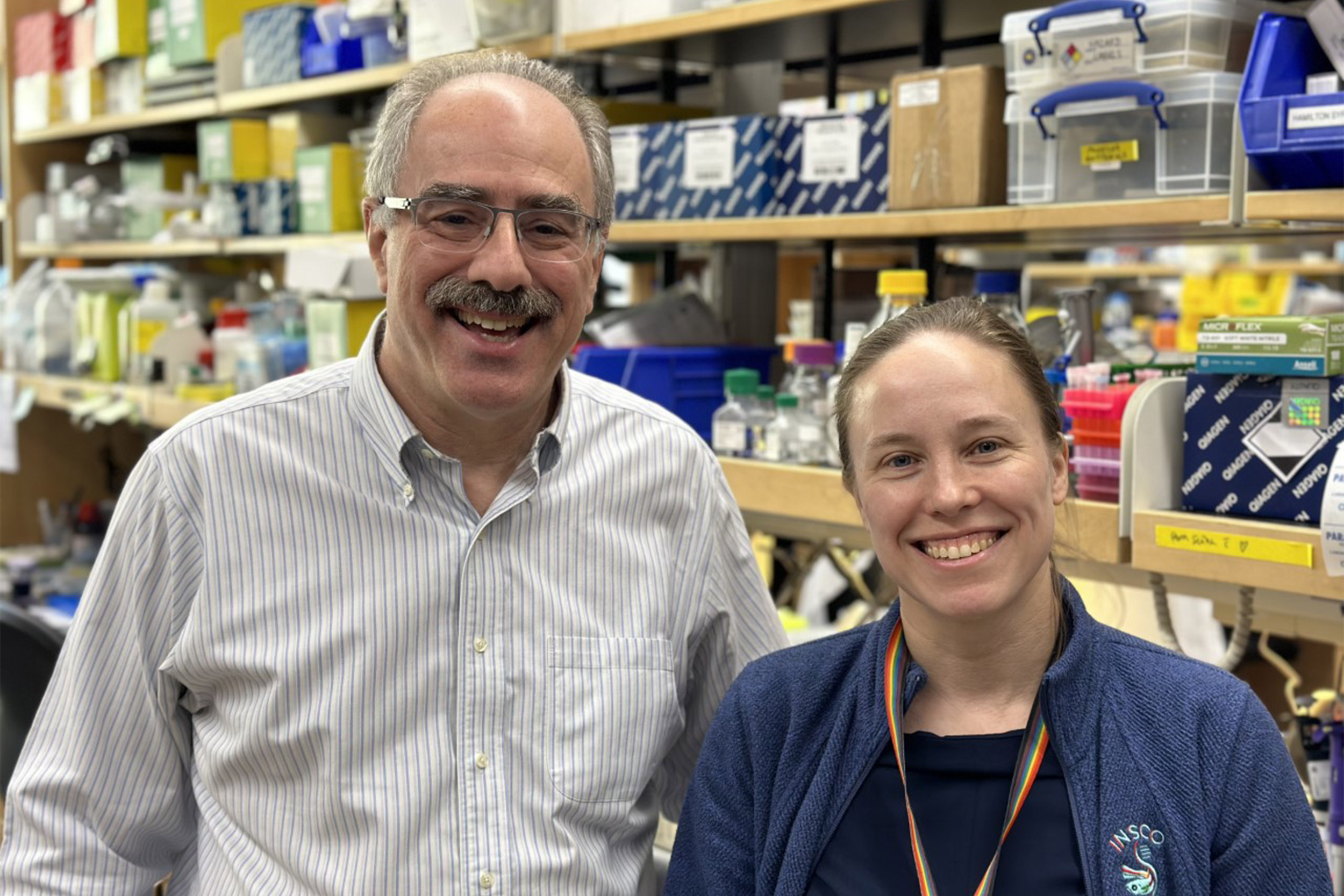How mutant protein leads to melanoma

Harvard file photo
Discovery of new mechanism could have wide implications for other cancers
Researchers from Harvard’s Stem Cell and Regenerative Biology (HSCRB)’s Zon lab have discovered a new mechanism that influences melanoma development, a finding that could have wide implications for patients across a variety of cancers.
The discovery, as described this week in Science, involves a protein known as CDK13. “Before this paper, no one knew the role of CDK13 in cancer,” said Megan Insco, a former postdoctoral fellow and first author of the paper.
Insco and her team found that the CDK13 protein acts as a tumor suppressor in melanoma and that mutation or loss of it can lead to the development of tumors. Working with melanoma patient data and the Zon zebrafish model, the team has learned what causes loss or mutation of the protein and how it can lead to cancer, including the underlying gene expression.
Cells routinely make gene expression mistakes. Insco found that cells produce shortened RNAs that then go on to make abnormal proteins leading to cancer. Fortunately, cells also have an active cleanup mechanism to take care of those transcriptional mistakes. “But if the cells can’t take out the trash, those RNAs accumulate and can become cancer-causing,” she said. In this paper, the team discovered that mutant CDK13 is the reason those abnormal RNAs aren’t mopped up.
Normally, CDK13 roams the cells performing RNA surveillance. If it encounters an abnormal RNA, it recruits a collection of proteins working together (known as a complex) that degrades short RNAs in the cell’s nucleus — in essence, vacuuming the mistakes and ridding the cell of this precancerous material.

But if mutated, CDK13 fails to perform its RNA surveillance duties and essentially stops taking out the trash. “We know those trash RNAs are causative in cancer because when we put them back into the zebrafish, it mirrored this whole process all over again,” said Insco.
CDK13 mutations are found in many human cancers and function the same in zebrafish, mouse, and human cells. The team observed mutated CDK13 in patient melanoma tissue and accelerated melanoma growth in their zebrafish studies.
The researchers also uncovered another implication for CDK13 mutations involving the PAXT complex, which is the first step of nuclear RNA degradation.
“It serves as a tagging mechanism,” Insco explained. But if CDK13 is mutated, the PAXT complex doesn’t get activated, “It’s like a switch to turn the vacuum cleaner on or not,” she added.
This new paper reveals that damaged RNAs are actively regulated, foreshadowing implications for the mechanism of cancer development for many patients. In melanoma alone, more than 20 percent of patients have this broken nuclear RNA surveillance mechanism involving CDK13.
“The finding that CDK13 is mutated in human cancers suggests a broader involvement of this mechanism in cancer,” said Leonard Zon, professor and executive committee chair for the Harvard Stem Cell Institute.
Along with CDK13, at least two other members of the PAXT complex are recurrently mutated in several cancer types, not just melanoma. “We believe it’s not just a CDK13 thing, but there are multiple other complex members that are going to be involved in breaking that vacuum cleaner,” said Insco.
Based on this work, Insco recently started her own lab at Dana-Farber Cancer Institute to better understand nuclear RNA surveillance and provide novel therapeutic approaches for melanoma patients who don’t respond to existing therapies. The Zon lab will continue to study RNA biology as it relates to tumor initiation.





